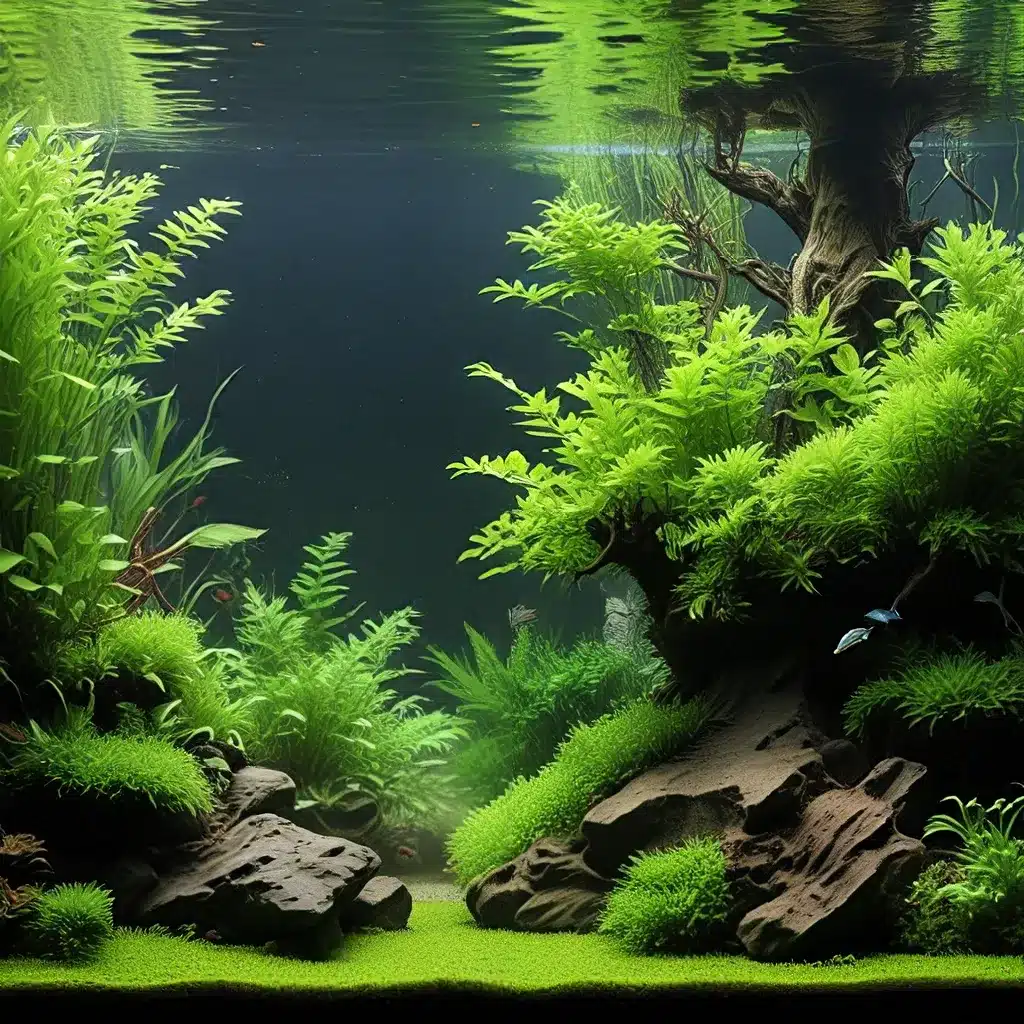
Unlocking the Secrets of a Thriving Underwater Garden
Aquascaping, the art of creating visually stunning and ecologically balanced aquarium landscapes, is a captivating pursuit that challenges hobbyists to harmonize the intricate demands of aquatic plants, fish, and water parameters. At the heart of this endeavor lies the meticulous placement of aquarium plants, which can make or break the success of your underwater oasis.
Laying the Groundwork: Understanding Plant Needs
Before embarking on your aquascaping journey, it’s crucial to develop a deep understanding of the specific requirements of the plants you wish to incorporate. King Aquarium offers a comprehensive resource for aquarium enthusiasts, providing invaluable insights into the care and cultivation of a diverse array of aquatic plants.
One of the primary considerations when selecting plants for your aquascape is their light requirements. Low-light, medium-light, and high-light** plants each have unique needs that must be carefully balanced to ensure their optimal growth and health. Properly matching your lighting setup to the specific plant species will lay the foundation for a thriving underwater ecosystem.
Additionally, understanding the nutrient demands of your chosen plants is paramount. Some species thrive in nutrient-rich substrates, while others prefer a more minimalist approach. Exploring the intricacies of CO2 injection, fertilization, and water chemistry will empower you to create the ideal conditions for your aquatic plants to flourish.
Designing the Aquascape: Principles of Placement
With a solid understanding of plant requirements, the next step is to delve into the art of aquascaping. This discipline combines principles of design, creativity, and ecological balance to craft visually stunning and biologically harmonious underwater landscapes.
One of the foundational concepts in aquascaping is the rule of thirds. This guideline suggests dividing your aquarium into three equal sections, both horizontally and vertically, and using these imaginary lines to guide the placement of your plants and hardscape elements. By adhering to this principle, you can create a sense of balance and visual interest within your aquascape.
Another key aspect of plant placement is the layering of your aquarium’s foreground, midground, and background. Strategically positioning taller plants in the back, medium-sized plants in the middle, and shorter species in the front can create a sense of depth and dimensionality, mimicking natural ecosystems.
Mastering Aquarium Plant Placement
With the groundwork laid, let’s delve into the nuances of plant placement within your aquascape. This intricate process requires a keen eye for detail and a deep understanding of plant growth habits and aesthetics.
Foreground Plants: These low-growing, carpet-forming species are the stars of the show, drawing the eye and creating a sense of lush, verdant groundcover. Examples include Dwarf Baby Tears (Hemianthus callitrichoides) and Glossostigma (Glossostigma elatinoides). Careful placement and regular trimming are essential to maintain a cohesive and well-manicured foreground.
Midground Plants: These medium-sized species provide the backbone of your aquascape, adding depth and defining the overall layout. Ideal midground plants include Cryptocoryne wendtii and Rotala indica. Experiment with different arrangements and groupings to create a visually appealing and natural-looking composition.
Background Plants: Towering species that add height and drama to your aquarium, background plants serve to create a sense of depth and draw the eye deeper into the scene. Examples include Echinodorus ‘Vesuvius’ and Ludwigia repens. Strategically place these plants to frame your aquascape and enhance the overall visual impact.
Accent Plants: Interspersed throughout your aquascape, accent plants add pops of color, unique textures, and visual interest. Examples include Java Fern (Microsorum pteropus) and Anubias nana. Judiciously placing these plants can elevate your aquascape to a new level of visual appeal.
Maintaining the Aquascape: Ongoing Care and Optimization
Achieving a thriving, visually stunning aquascape is not a one-time endeavor; it requires a commitment to ongoing maintenance and optimization. Regular pruning, trimming, and replanting are essential to keep your plants healthy, promote new growth, and maintain the overall aesthetic of your underwater masterpiece.
Additionally, vigilantly monitoring and adjusting water parameters, such as pH, temperature, and nutrient levels, will ensure your aquatic plants continue to thrive. Staying attuned to the subtle changes in your aquascape and making timely interventions will allow you to fine-tune the delicate balance of your underwater ecosystem.
Embracing the Aquascaping Journey
Mastering the art of aquarium plant placement is a rewarding and fulfilling journey that combines horticultural expertise, design sensibilities, and a deep appreciation for the natural world. By immersing yourself in the intricacies of aquascaping, you’ll not only create a visually captivating underwater oasis but also cultivate a profound understanding of the intricate relationships that sustain life beneath the surface.
So, embark on this captivating adventure, and let your aquascape bloom with vibrant, thriving plants that will inspire and delight both you and your aquatic companions. Remember, the key to a flourishing aquascape lies in your commitment to understanding, placement, and ongoing care – a true testament to the art of aquarium horticulture.

